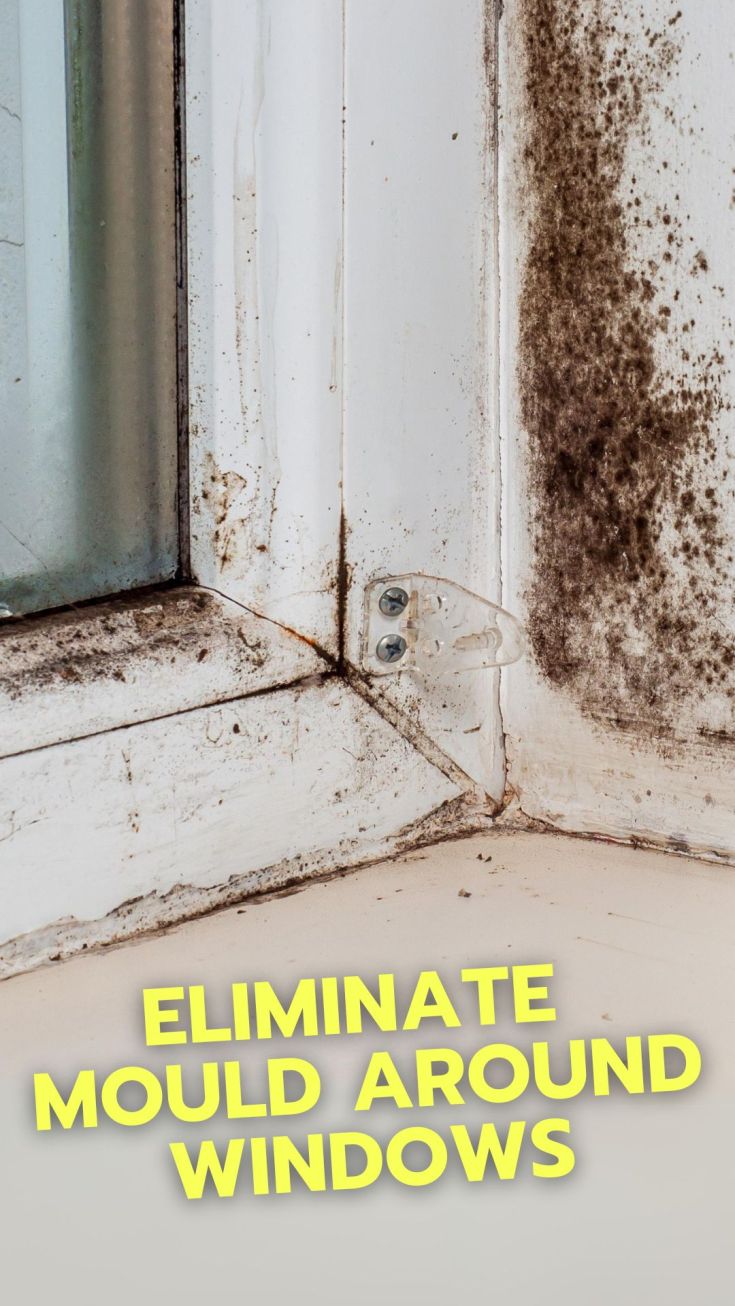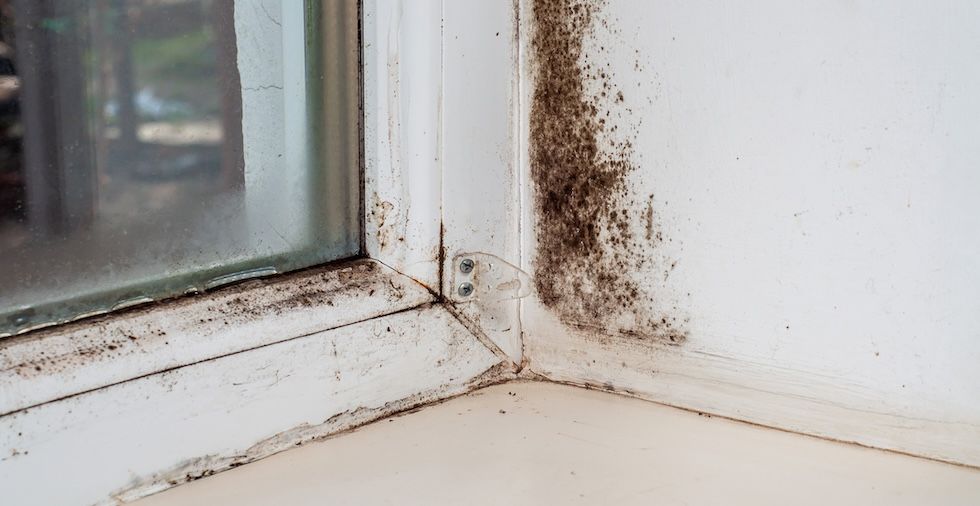- What causes mould around windows?
- How to figure out the source
- Step-by-step guide to removing mould around windows
- Prevent future mould growing
We all love to keep our homes spick and span. However, there are some sneaky problems that many of us find hard to combat. If you’ve noticed little black marks around the windowsill, you may have mould around your windows. Acting fast is the only way to deal with this pesky issue.
First things first, don’t panic. This is not a sign that there’s something fundamentally wrong with your home. Mould around windows is a common issue in many homes, particularly if there’s high humidity or poor ventilation. However, you should never ignore it!
Not only can mould be unsightly, but it can also pose health risks, especially for people who already have allergies or respiratory issues. You can never afford to put yourself at risk. Luckily, there’s a way that you can swiftly handle the problem. With the right approach, you can effectively deal with mould around windows. Here’s how to tackle this problem step by step.
What causes mould around windows?
First up, it’s time for a biology lesson. Understanding what causes mould around windows can help you tackle the problem more effectively. Key factors in this problem include:
- Dampness: When you have high humidity or dampness in your home, that can lead to mould spores taking root. These float around in the air and can make you unwell!
- Poor ventilation: One of the main causes of mould around windows has to be poor ventilation. When there’s inadequate airflow, it encourages moisture accumulation.
- Material types: What material surrounds your window? Wooden window frames absorb moisture, while cement and trim can also be susceptible if not properly sealed. Take a proper look at the material before you do anything else.
How to figure out the source
It’s time to do some detective work. To effectively stop mould around windows, you need to know what is causing it. Spoiler: Mould thrives in damp, poorly ventilated environments. Here are the things you should be checking for:
Look for condensation
This is often caused by cold weather and can lead to moisture build-up on windows, especially in poorly insulated homes with double-glazed windows. You will notice that there is condensation on the inside of your windows, which may get worse with the heating on. Look around your home (and check the windows!) for this problem now.
Check for leaks
Worse still, leaks can sometimes make your home damp and make it a prime place for mould to thrive. Check out the window sealant and look for any leaks or gaps where water may enter. Sealing these areas can prevent damp conditions that promote excessive mould growth.
Inspect your ventilation
We’ve already waxed lyrical about how ventilation can cause mould problems. So, it should come as no surprise that you may need to improve the ventilation in the room. Use an extractor fan in your kitchen or bathroom. You can also keep windows slightly open when possible to reduce humidity levels. (Of course, this is not ideal in the wintertime!)
Consider the humidity levels
You want to aim to keep indoor humidity below 60%. Ideally, you want it to be between 30 and 50%, but that is not always possible. One way you can approach this is by using a dehumidifier to manage moisture levels effectively. Give it a go and reduce mould growth.
Step-by-step guide to removing mould around windows
Now that you understand what the cause may be, let’s take a look at how you can deal with it. Follow our simple steps, and you should be onto a winner in no time.
Step 1: Gather everything you need
Before you begin removing mould from your windows, you will need some tools. As we’ve mentioned, mould can be dangerous to your health, especially if you breathe it in. So, ahead of trying to attack the stuff, you need the following things:
- Protective gloves
- Mask (if possible, a single-use FFP2 NR mask)
- Spray bottle
- White vinegar
- Soft cloths or sponges
- A small brush (or an old toothbrush works well)
- Warm, soapy water
- A squeegee
Do you have everything that you need? You should have most of these things around your home. When it comes to the mark, getting an FFP2 NR mask means that you will be able to breathe normally while you are cleaning away the mould. Once again, you want to put your safety above everything else when dealing with this problem.
Step 2: Prep your cleaning solution
Next, you need to prepare a cleaning solution. To effectively remove mould around windows, you can make a solution at home. Simply add white vinegar and water to a spray bottle. Shake this up a little to mix before you start using it.
Of course, it goes without saying that you should be wearing your mask and gloves at this point. It’s important to make sure that you are protecting your health before you get to work on this.
Step 3: Spray the mould around the window
Now that you are ready, you need to get to work and spray the affected areas. Generously spray the mouldy sections around the window frame. Make sure that the solution saturates the mould entirely—the more, the better. Allow it to sit for at least 10 minutes to kill the mould spores.
Step 4: Get scrubbing away!
When you have left it to settle, using a soft cloth or sponge, scrub the mouldy areas. If you find that the mould is being stubborn, especially black mould around windows, use a small brush to gently remove the mould from window sealant and other surfaces. Give it some elbow grease!
Step 5: Rinse and dry the area
Now that you are done with that, wipe down the window frame. You should use a cloth dampened in warm, soapy water to remove any remaining cleaning solution. You can then use a squeegee or a dry cloth to ensure all surfaces are completely dry. Don’t skip this last part! This step is essential to prevent mould from returning.
Prevent future mould growing
You’ve got rid of the mould… but what’s to say that it won’t come back. Now that you’ve done that, the final (and most important step!) is to prevent it from growing in the future. Here’s how:
- Clean your windows and frames regularly to remove dust and moisture. For the best results, make this part of your regular cleaning routine.
- Control the humidity in the room at all times. Use a dehumidifier or anti-condensation paint to keep indoor humidity levels in check.
- Look for ways to improve the ventilation in your home. Ensure that air can circulate freely around windows, and consider using thermal curtains to minimise condensation.
One last thing! Watch the affected areas for signs of mould returning. If you notice mould reappearing, revisit the cleaning process and reassess your home’s humidity levels and ventilation.
Ready to get started? By following these steps, you can effectively deal with mould around windows and create a healthier living environment in your home. When you notice the signs of mould, don’t ignore them. You might want to look the other way and hope that they go away, but this is a mistake. It could put both your and your family’s health at risk. Remember, regular maintenance and monitoring will help prevent future mould issues. For that reason, it’s always a smart idea to keep your windows clean and your rooms well-ventilated in the future.
Q&A
Did we miss something along the way? If you’re still looking for answers, you’ve come to the right place. Let’s take a look at some of the frequently asked questions about mould around windows:
What causes mould around windows?
Mould growing around windows is mainly caused by excess moisture and inadequate ventilation. Common sources of moisture include leaks, condensation, and high indoor humidity.
Is black mould around windows dangerous?
Yes, black mould can pose health risks, particularly for people with allergies, asthma, or weakened immune systems. It’s important to address mould growth promptly.
How do you get rid of mould around windows?
To effectively get rid of mould around windows, clean the area using a cleaning solution or a mixture of white vinegar and water. Make sure that the area is thoroughly dried afterwards. Read our full guide here to find out more.
Why am I getting mould around my windows?
You may be experiencing mould due to high humidity, poor ventilation, moisture from condensation, leaks, or drip from window frames. Look out for the source first.
Have we helped solve your mould problems? Let us know in the comments below!


Leave a Reply